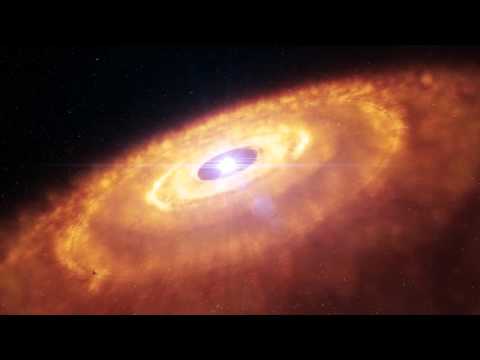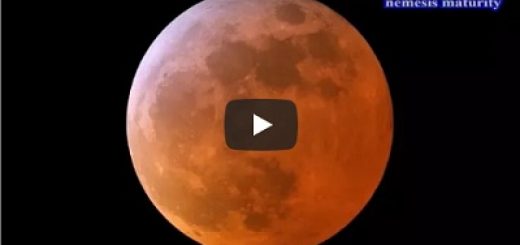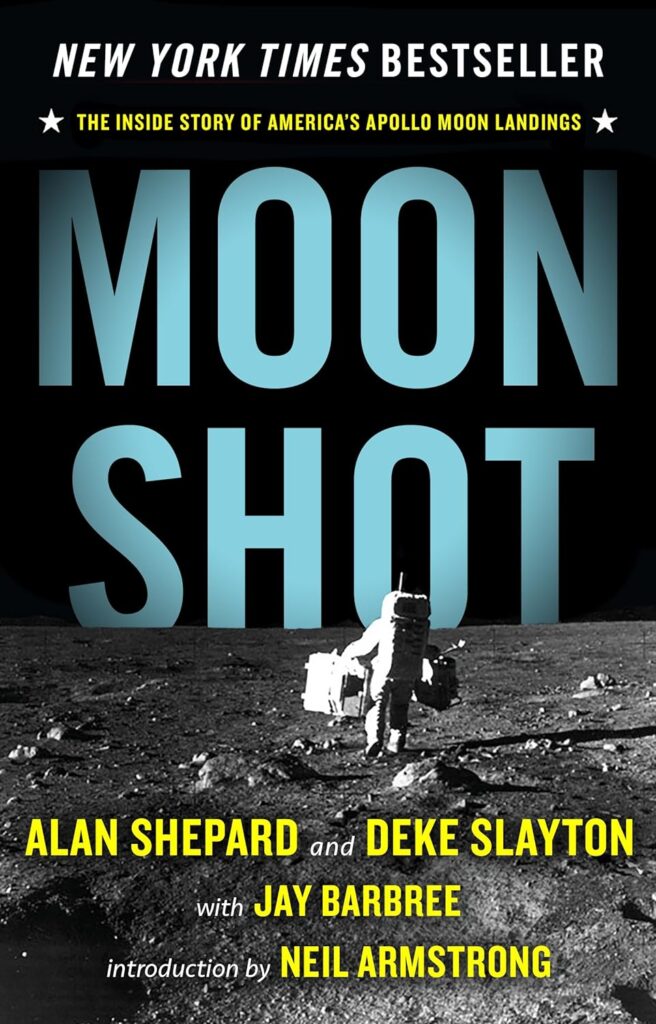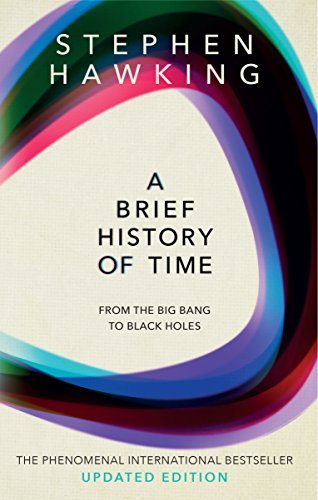Brian Cox on how black holes could unlock the mysteries of our universe
– Could black holes be the key to a quantum theory of gravity? A deeper theory of how reality, of how space and time works? Black holes are interesting because we have a place called the ‘event horizon’ where we think that we have full control of the physics. We understand what’s happening, but there is a fundamental clash between our two basic theories of nature: both quantum theory and general relativity together. And the quest to unify those two great pillars of 20th- and 21st-century physics into what’s often referred to as ‘a quantum theory of gravity’ is in some sense the holy grail to theoretical physicists. So black holes are forcing us into a deeper understanding of what space and time are. And in that sense, I think it is fair to say that black holes are the keys to understanding the Universe. I’m Brian Cox, I am a professor of particle physics at the University of Manchester, and the Royal Society Professor for Public Engagement in Science, and amongst other things I’m the author of the book, “Black Holes: The Key to Understanding the Universe.” The idea of black holes goes back a long way actually, back into the 1780s and 1790s. There were two physicists, mathematicians, natural philosophers, whatever you want to call them, working at the time that had the same idea, apparently independently of each other. One was a clergyman called Mitchell and the other was the great French mathematician, Laplace. And they were both thinking in terms of an idea called ‘escape velocity.’ The escape velocity is the speed you have to travel to completely escape the gravitational pull of something, a planet or a star. So for the Earth, for example, the escape velocity from the surface of the Earth is around eight miles a second. If you go bigger, you make a bigger, more massive thing, let’s go to a star, for example, like the Sun, it’s somewhere in the region of 400 miles a second. The escape velocity increases because the gravitational pull at the surface increases. What Mitchell and Laplace thought, and I think it’s a very beautiful idea, is they imagined in their mind’s eye, “Well, can you go bigger? Can you imagine more and more massive stars, giant stars such that the gravitational pull is so large at the surface that the escape velocity exceeds the speed of light?” And then you wouldn’t be able to see them. To understand why black holes cause so many conceptual problems, it might be worth just describing very, very briefly what a black hole looks like. So a black hole, what do you see from the outside? Well, there’s an event horizon surrounding the black hole. In some sense, it defines the boundary between the external universe and the interior of the black hole. And if you go across the boundary into the interior of this sphere, then even if you can travel as fast as the speed of light, you can’t escape the gravitational pull of the black hole. But another description of the event horizon which confused people all the way through the history of black hole research actually, was the idea that the event horizon when viewed from the outside is a place in space where time stops. And that’s a direct prediction of Einstein’s theory of relativity. From the external perspective, there is a central problem though which is still not solved, which is what lies at the center of a black hole? You might think of it as an infinitely dense point to which this massive star collapses. So what are we picturing? It’s this thing called the ‘singularity.’ Actually, it’s not right to talk about the center of a black hole really. Just even in pure general relativity, when you look at a nice map of a black hole, a so-called ‘Penrose diagram’ named after Roger Penrose, what you see is that space and time is so distorted, that in some sense, their roles swap, the singularity is not really a place in space at all, it’s a moment in time, and actually it’s the end of time. But the nature of that thing was not and is still not understood, and for many, many years actually until quite recently, then people thought, “Well, there we are, we have a problem with the singularity. We don’t really have any access to it. We don’t have the conceptual tools to explore it. So it may remain a mystery for a century to come; it is not clear what to do. The great revolution in black hole research was to notice that actually there are conceptual problems, not only in this extreme place at the singularity, whatever that might be, but at the horizon. What Stephen Hawking showed in a landmark couple of papers is that if you consider quantum theory, quantum mechanics in the vicinity of the horizon of a black hole then you find that they glow, they produce particles, they have a temperature. This thing that we’ve pictured in Einstein’s theory is pure geometry, just distorted space and time actually emits particles- it’s called Hawking radiation. And Stephen, in his 1974 paper, gives this hand-wavy description- which is kind of a nice way to picture what’s happening- the idea is to zoom in in the vicinity of the event horizon of a black hole. You can picture what’s happening as a series of particles coming in and out of existence all the time, so-called ‘entangled particles.’ And so one of those pairs of particles is on the inside of the event horizon, and one is on the outside. And then it can happen that the one on the outside instead of merging back with its partner again can escape into the Universe, removing energy from the black hole as it goes; therefore, it’s shrinking, which means that one day it will be gone. That has profound implications. So black holes are not eternal prisons, they have a lifetime. One day, whatever’s in there is returned to the Universe. The question was, the central question that was immediately raised by those calculations is this: What happened to all the stuff that fell in? The way I’ve described it, the way Einstein’s theory describes it, is somehow that stuff goes to the singularity, whatever that thing is, the end of time, the region of space time that’s so convoluted and distorted that we don’t understand how to describe it at all- But then one day the whole thing is gone. All that’s left in the far, far future is Hawking radiation, those particles that were produced in the vicinity of the event horizon. The question is, is it possible if you could collect all that radiation, all the Hawking radiation through the whole life of the black hole- is it somehow possible in principle that the information about everything that fell into the black hole throughout its history is imprinted in that radiation in the far future? Is that true or is it not true? You might say, why did I ask that question? Seems like a bit of a random question. It’s a very important question. Information is conserved in the Universe as far as we know. So every law of nature that we have says that information is conserved. So let’s say that I take a book and I set fire to it, I incinerate it, I destroy it in any way that I can. In basic fundamental physics, then it turns out that if you could collect every piece of that thing that I detonated or incinerated, every quantum of radiation, every photon, every particle, everything, in principle, if I could just collect it all, then I could reconstruct the thing that I had destroyed. The problem was black holes, quantum mechanics, general relativity, when you put them together you have this apparent prediction that these things erase information from the Universe- this became known as the ‘Black hole information paradox.’ It turns out if we fast forward to the present day and a series of papers are still being written, so this is still research that’s happening as we speak, but it turns out now that the general view is that black holes do not erase information from the Universe. We now think you could collect all that radiation, and in principle, put it into some quantum computer and reconstruct the information about everything that fell in. But the implications of that, that the mechanism by which that happens, I would say it’s profoundly exciting because it really does seem to be given as a glimpse of a deeper theory of gravity. The simple way to say it, let me say it in in one sentence: It seems that space and time are not fundamental. So one view, and I emphasize that there are other views where the cutting edge of research now, but one view is a field which has become known as ’emergent spacetime.’ And so the idea is that space and time themselves emerge from what? From quantum entanglement, from some kind of smaller parts or pieces. We don’t know what those things are. We don’t know the nature of them but it does seem that there’s a deeper underlying theory from which space and time emerge. That is what we call the ‘quantum theory of gravity.’ And my view is that if we’re gonna talk about the origin of the Universe, even ask questions such as did the Universe have a beginning in time, which we don’t know the answer to, then it surely seems to me that we have to understand what space and time are before we can ask and have any chance of answering such questions. And black holes, it turns out are the objects that we can see, that we can observe that actually exist in nature that force us down that route to ask questions, sharp, well-defined questions actually, about the nature of space and time themselves. Einstein said that if you look at nature really carefully and keep pulling at the intellectual threads and keep going and just keep delving down into what nature seems to be trying to tell us, then if you’re lucky and persistent, you can catch a glimpse of something deeply hidden. It’s beautiful that, isn’t it? A glimpse of something deeply hidden, which is the deep underlying structure of nature, the deep underlying structure of reality itself. And I think it’s very beautiful. No one really knows, I think it’s fair to say, where this is going, but that hints of something deeply hidden. – Get smarter faster with videos from the world’s biggest thinkers. Want to dive deeper? Become a Big Think member and join our members-only community, watch videos early, and unlock full interviews.













